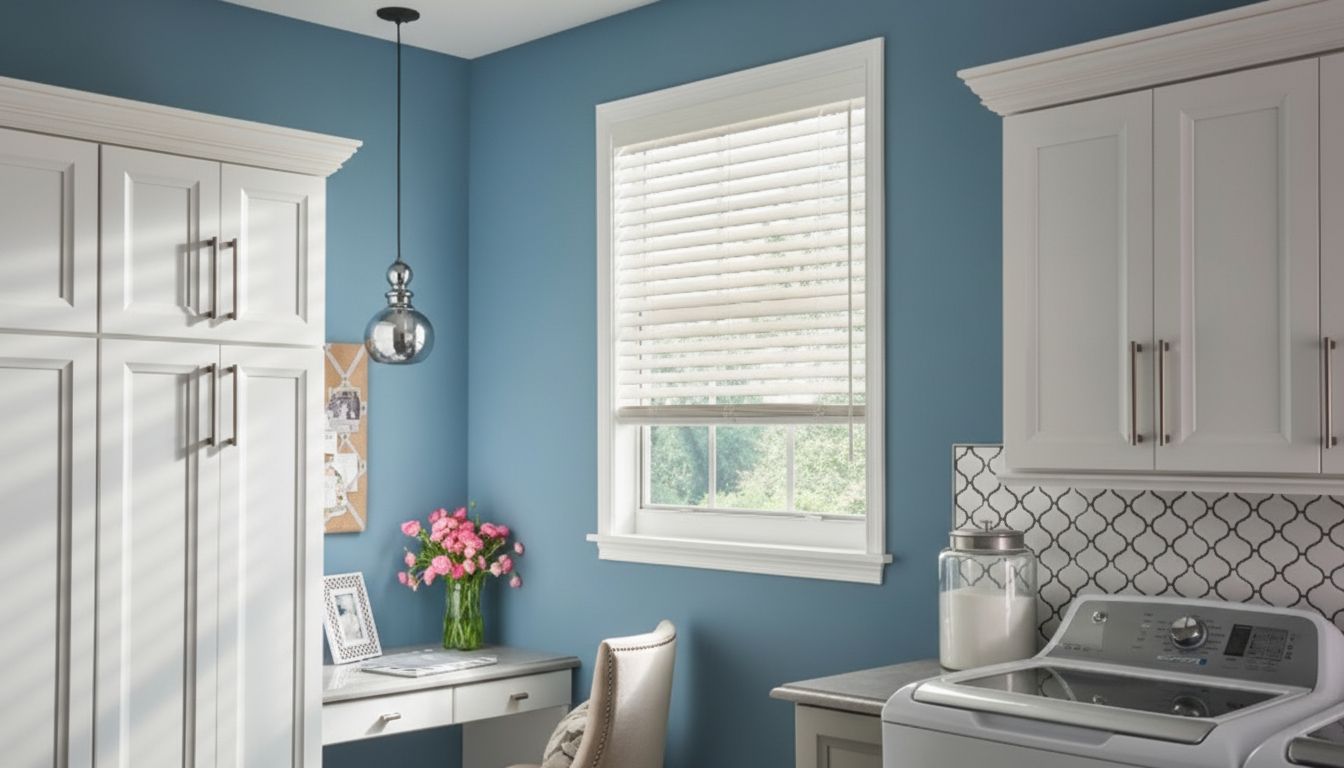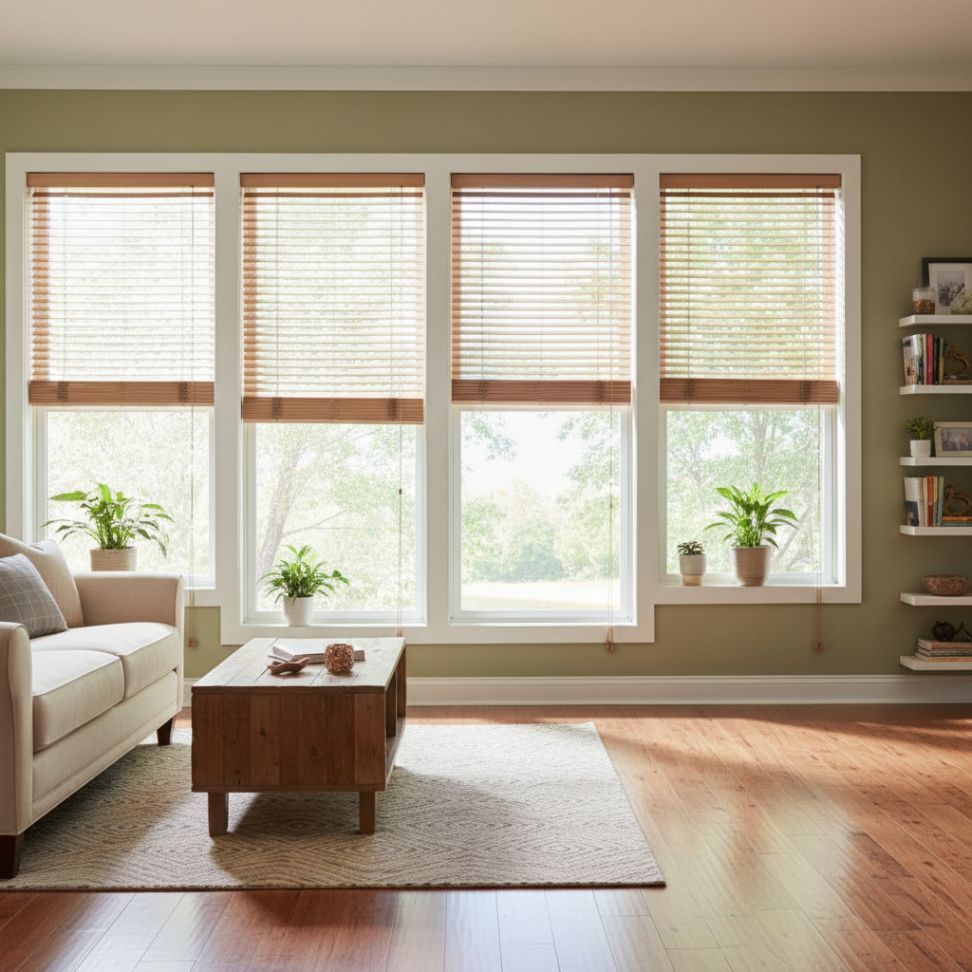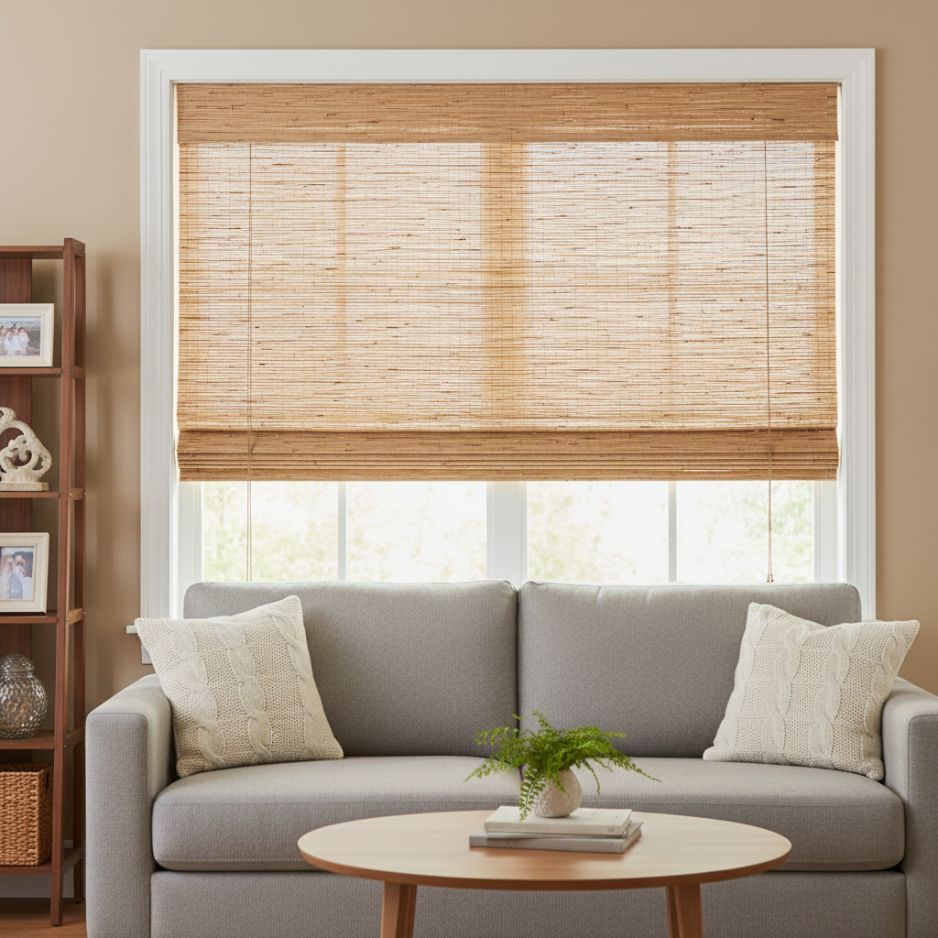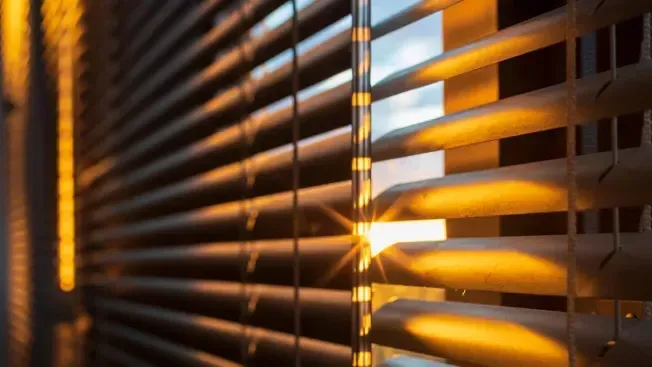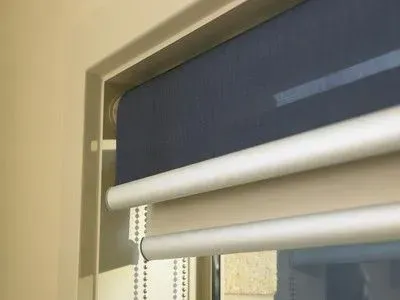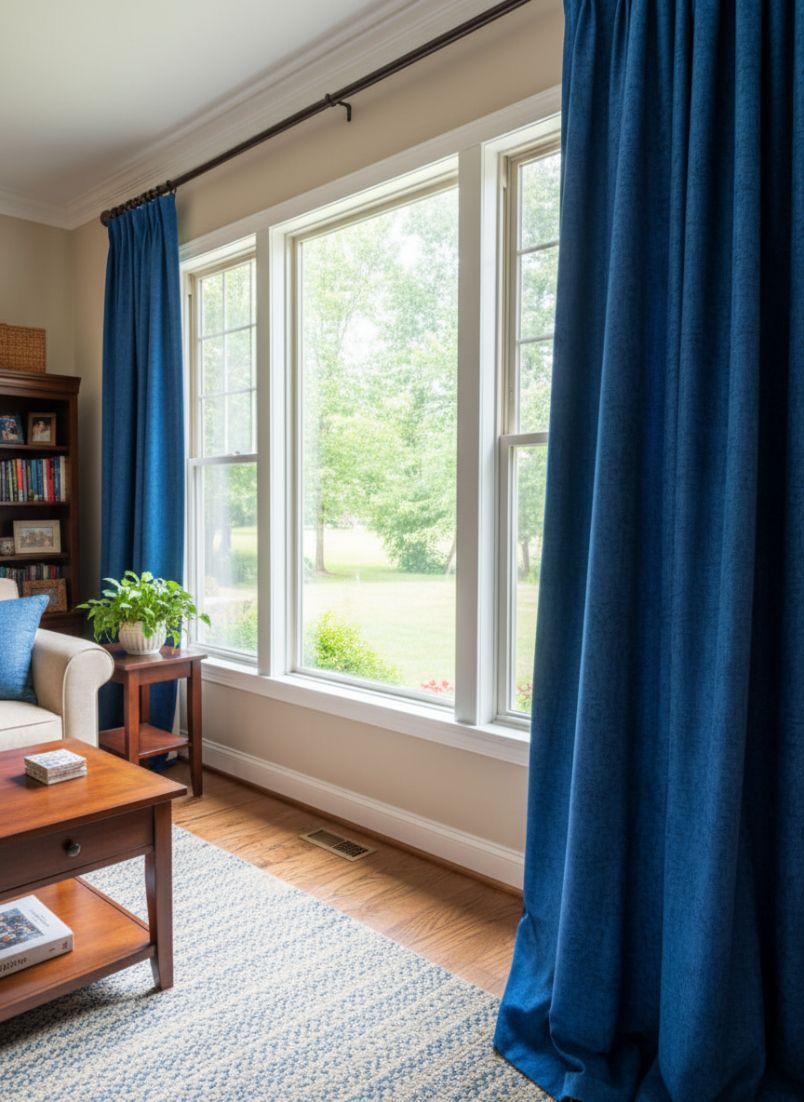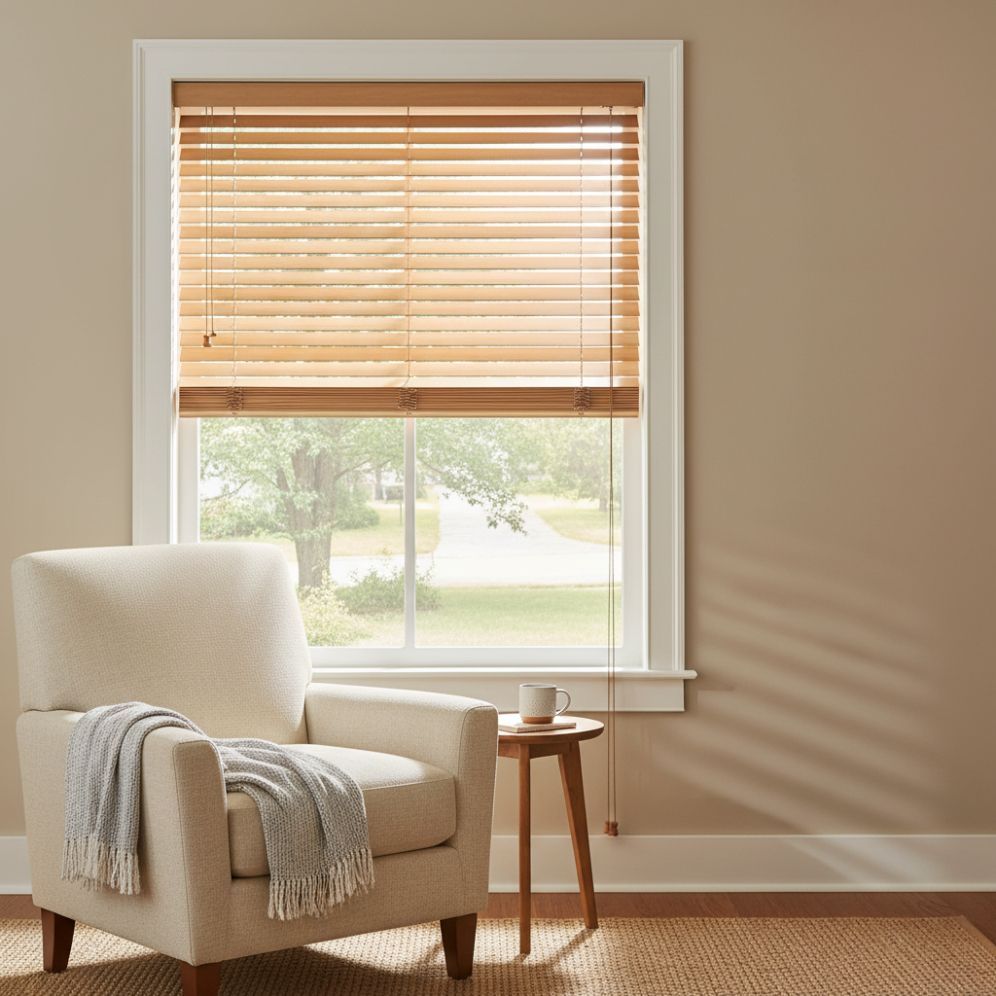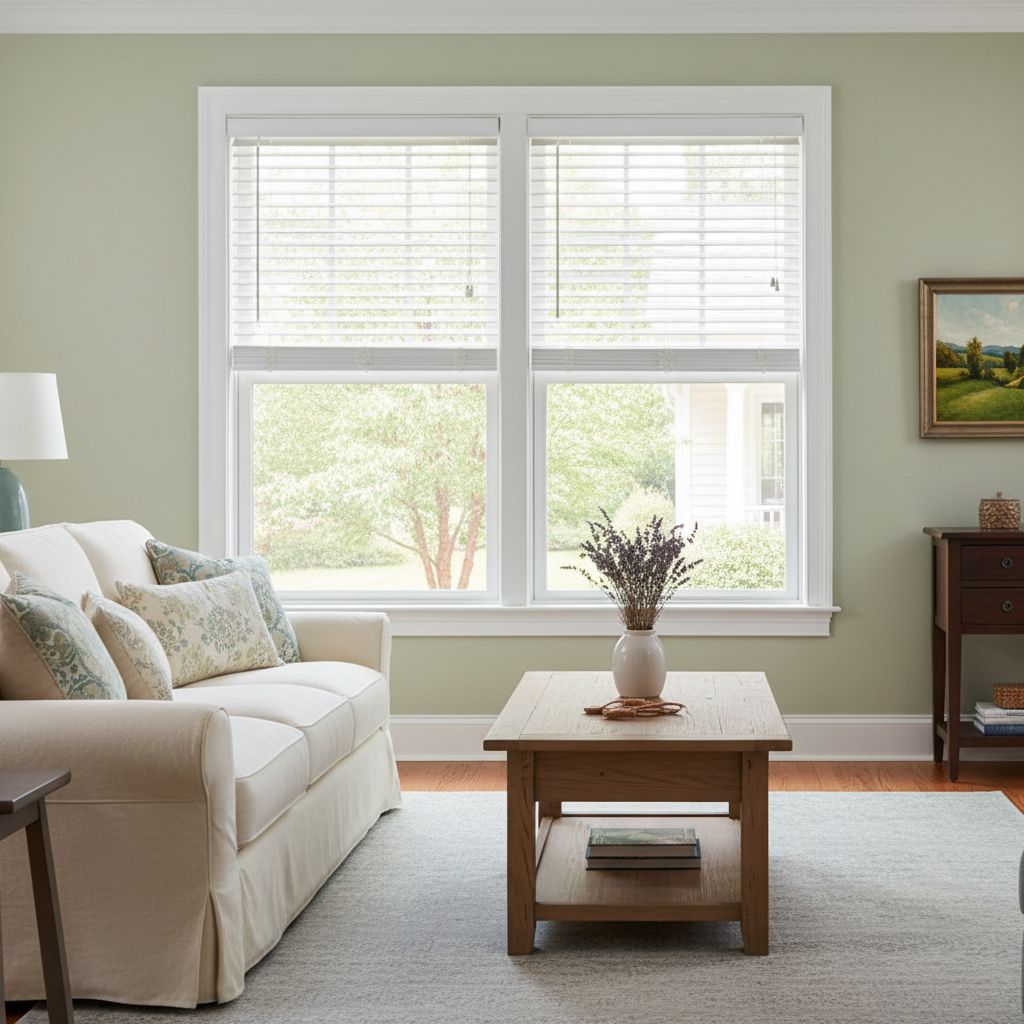What Types of Blinds Are Easiest to
Clean and Maintain?
TL;DR:
Faux wood, aluminum, and roller
blinds are the easiest to clean and maintain. Their smooth, moisture-resistant surfaces make them ideal for high-use areas like kitchens, bathrooms, and allergy-sensitive homes.
Why Cleanability Should Guide Your Blind Choice
When selecting blinds, one of the most overlooked factors is how easy they are to clean and maintain.
Dust, grease, and allergens build up quickly on window coverings—especially in high-traffic rooms like kitchens or bathrooms. For busy homeowners, families with kids or pets, or commercial spaces, choosing low-maintenance blinds can save hours of upkeep.
At
Love Is Blinds AZ, we help clients choose blinds that not only look great but are also practical to live with. Below, we’ll explore materials, structures, and lifestyle considerations so you can confidently select blinds that match your cleaning preferences.
What Makes a Blind Easy to Clean?
Not all blinds are created equal—some are naturally resistant to grime, while others require constant upkeep. Here's what affects cleanability:
Material Composition
- Smooth, non-porous surfaces like aluminum or PVC repel dust and moisture.
- Textured fabrics tend to trap dust, pet hair, and airborne particles — making them common
Allergy-Causing Window Treatments for sensitive households.
- Moisture-resistant materials like
faux wood or vinyl are ideal for wet areas.
Blind Structure & Design
- Flat or smooth surfaces (e.g., roller blinds) are easy to wipe.
- Horizontal slats attract more dust than
vertical ones.
- Intricate pleats or folds (e.g., Roman or cellular
shades) are harder to clean.
Room Conditions
- Kitchens introduce grease and steam—opt for wipeable surfaces.
- Bathrooms need moisture- and mildew-resistant blinds.
- Bedrooms and living rooms are more forgiving but still collect dust.
Lifestyle Factors
- Pet owners need durable, scratch-resistant options.
- Families with kids benefit from cordless and stain-resistant materials.
- Allergy sufferers require dust-repellent and washable designs.
Faux Wood Blinds: Moisture-Resistant and Easy to Wipe
Faux wood blinds, made from PVC or composite polymers, combine durability with a traditional wood appearance.
- Waterproof and heat-resistant, making them excellent for kitchens and bathrooms.
- Dust doesn’t cling to the slick surface, and grease can be wiped with a damp cloth.
- Simple slat design allows for quick cleaning using a microfiber cloth or vacuum brush.
- Affordable and stylish, they’re a practical alternative to
real wood.
Best For: Busy households, rental properties, or anyone needing low-maintenance, all-purpose blinds.
Aluminum Blinds: Low-Maintenance and Dust-Repelling
Aluminum mini blinds offer one of the most hassle-free cleaning experiences of any window treatment.
- Non-porous surface repels both dust and moisture.
- Can be cleaned with
just a microfiber cloth or vacuum attachment—no need for detergents.
- Rust-resistant, making them ideal for humid or allergy-prone environments.
- Lightweight but sturdy, they maintain their shape over time.
Best For: Offices, bathrooms, kitchens, and homes with allergy-sensitive occupants.
Roller Shades: The Minimalist’s Dream for Easy Cleaning
Roller shades feature a smooth, continuous fabric or vinyl sheet that rolls up neatly—leaving no room for dust buildup.
Flat surface allows for quick wipe-downs.
- Many are made from
wipeable PVC or vinyl, great for high-use areas.
- With no slats or pleats, there’s
less chance of grime accumulation.
- Options include blackout, solar, and decorative patterns, balancing form and function.
Best For: Living rooms, kids’ rooms, or any space with moderate dust and minimal grease exposure.
Vertical Blinds: Easier Than They Look
Vertical blinds can seem complex but are often easier to maintain than horizontal blinds.
- Slats hang vertically, reducing horizontal surfaces where dust can settle.
- Vinyl or PVC slats are the
easiest to clean—wipe with a damp sponge or cloth.
- Fabric versions are trickier but can
be removed for spot cleaning or vacuuming.
Best For: Sliding glass doors, patio entrances, and wide windows.
Roman Shades: Stylish but High-Maintenance
Roman shades are beloved for their elegant folds but can be demanding to maintain.
- The
pleated fabric traps dust and requires
regular vacuuming or dry cleaning.
- Spot cleaning is possible but must be done with care to avoid wrinkling or damage.
- Not recommended for areas with high humidity or frequent mess.
Best For: Decorative spaces, formal rooms, or homes prioritizing aesthetics over ease.
Cellular Shades: Dust-Resistant and Energy-Efficient
Cellular (honeycomb) shades offer insulation and a soft appearance with moderately easy maintenance.
- Cellular design traps air, reducing energy bills and minimizing condensation.
- Though fabric-based, they’re
antistatic and less prone to dust.
- Use a
vacuum with brush attachment or light blow with compressed air.
Best For: Bedrooms, nurseries, or any room where insulation is key.
How to Clean Blinds Effectively: Tips and Tricks
Keeping blinds clean doesn’t have to be a hassle if you follow a regular maintenance schedule.
Weekly Light Cleaning
- Use a
microfiber cloth or duster to wipe slats or flat surfaces.
- For vertical blinds, a quick swipe downward works best.
Monthly Deep Cleaning
- Remove blinds if necessary and soak in
mild soapy water for tougher grime.
- Avoid abrasive tools or harsh chemicals—especially on fabric or painted finishes.
- Use
vacuum attachments on fabric blinds to avoid pulling or fraying.
Common Mistakes to Avoid
- Don’t use bleach or ammonia-based cleaners—they can degrade finishes.
- Avoid
excess water on wood or faux wood—damp cloths only.
- Don’t scrub too hard—especially on fabric-based shades.
Matching Blinds to Your Lifestyle and Environment
Choosing the easiest-to-clean blinds depends largely on your personal needs and space conditions.
Best Blinds by Room
- Kitchen: Faux wood or aluminum for grease resistance
- Bathroom: PVC, vinyl vertical blinds for moisture control
- Living Room: Roller shades for simplicity and elegance
- Bedroom: Roman or cellular shades for softness, insulation, and effective blinds to reduce heat during warmer months
Best Blinds by Lifestyle
- Busy Families: Faux wood or roller shades with cordless design or
child and pet-safe blinds for added safety in family spaces
- Pet Owners: Aluminum or faux wood—resist scratches and fur
- Allergy Sufferers: Aluminum or cellular shades for dust control
FAQs About the Easiest Blinds to Clean and Maintain
What is the easiest blind to clean?
Faux wood and aluminum blinds are the easiest due to their moisture-resistant and dust-repelling properties.
Are fabric blinds hard to maintain?
Can I vacuum my blinds?
Absolutely. Use a soft brush attachment to prevent damage.
Which blinds are good for humid rooms like bathrooms?
Faux wood, aluminum, and vinyl vertical blinds perform best in moisture-rich environments.
Expert Window Treatment Advice from Love Is Blinds AZ
Blinds are more than window coverings—they impact your comfort, indoor air quality, and home upkeep.
At Love Is Blinds AZ, we’ve worked with thousands of homeowners and businesses to find the best window solutions that are easy to live with. Based on decades of experience, we recommend:
- Faux wood blinds for all-around durability and ease.
- Aluminum blinds for allergy control and minimal cleaning effort.
- Roller shades for clean aesthetics and simplicity.
Your final choice should reflect your lifestyle, home environment, and how much time you’re willing to spend on upkeep.

